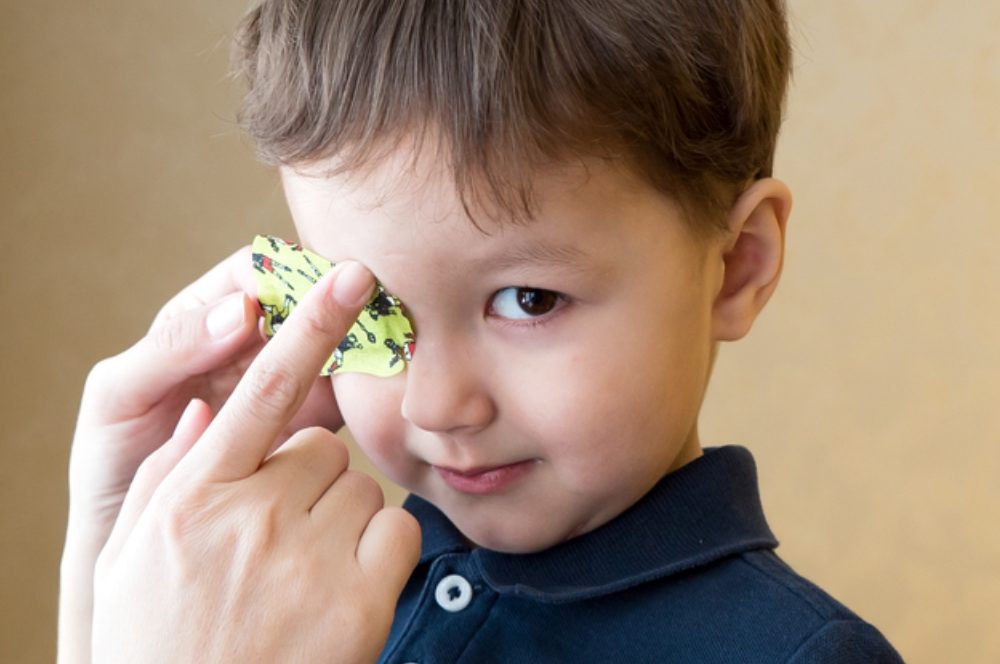Does Your Child Need an Eye Patch?

If your child has been diagnosed with amblyopia (“lazy eye”), wearing an eyepatch may be necessary. The principle is that by blocking the vision of the better-seeing eye, the visual system in the brain related to the worse-seeing eye will have to work harder. Since a young child’s brain is very “flexible”, the vision can improve with more practice. Patching is also sometimes also used to help manage strabismus (eye misalignment). In either case, proper wear is essential for an eyepatch to work effectively and efficiently.
Types of eyepatches
There are a variety of eyepatches to choose from. The classic “pirate” patches are best avoided as they generally do not fit snugly enough keep a child from peeking and also do not fit well over or under glasses. Instead, adhesive-backed patches are usually the best option. These are essentially like a large band-aid that fits over the eye. Because they adhere in place, children cannot move these eyepatches to see around them. Adhesive patches should always be worn underneath eyeglasses and should never be adhered to the glasses themselves. Cloth (or “sock”) patches are another option: These fit over the lens of your child’s glasses. A cloth patch will only work if your child wears eyeglasses that fit snugly. A third option is sometimes to put a “filter” over the lens of the better-seeing eye, which does not totally block vision but blurs it enough to achieve the goal of improving the other eye. Finally, atropine eye drops may sometimes be used. Your doctor and you will discuss the best option for your child if such a treatment is needed.
How can I encourage my child to wear their eyepatch?
For eye patch therapy to work, your child must wear the patch several hours a day for months or even years, depending on the condition. For children, this can be a challenge. Here are some tips that can help your child adhere to a patching schedule.
Decide on patch-wearing hours
First, figure the time(s) you think would be best for your child to wear the patch. At school? At home? In the morning? In the evening? You can break up the time your child wears the patch if that makes creating a routine more manageable. Keep in mind that your child must be awake while wearing the patch.
Make a plan
Once you’ve figured out the time of the day that your child will most likely adhere to a patching routine, create a clear patch-time schedule, outlining the hours of the day your child will wear the patch. This leaves no room to argue or negotiate, making it easier for you to enforce the routine.
Set a timer
If your plan is for your child to wear the patch two hours in the morning and two hours in the evening, or four hours straight after school, set a timer, so it’s clear to everyone when the patch comes off.
Get creative
Let your child decorate their patch with paint, stamps, stickers, or other materials. If the patch is more fun to look at, it may make wearing it a bit more fun.
Distract and reward
It takes about 10 to 15 minutes for the brain to switch over to the non-patched eye. Distract your child during this time with a toy or TV show. Schedule fun things for them to do, if possible, during their eye patch wearing time, such as a visit to the playground or park.
To reinforce the patching routine, offer a reward such as a sticker or a star for every day they stick to the schedule.
Contact SightMD today to schedule an appointment with one of our doctors to discuss your child’s vision health at one of our convenient locations!


